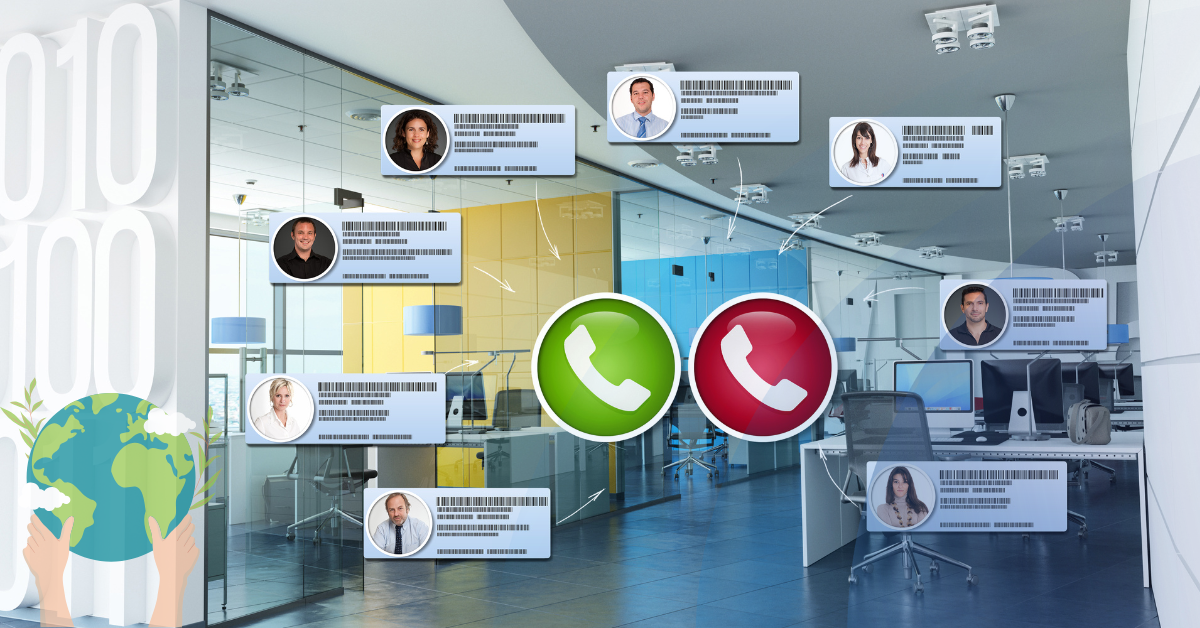As previously mentioned, we’re exploring the value of managing through the employee lifecycle this month. This is the concept that building a happy (and therefore productive) workforce with minimal turnover requires more of an investment than the time it takes to hire, train and conduct reviews once a year. People need more and are demanding more. There’s an understanding that a good career is not just about being able to pay the bills – it’s about providing meaning and personal growth and requires investments in time and effort. Companies and HR departments are on board with making these investments, especially given the unique challenges these last long months have offered, but where to begin? There’s good news: If you’ve gone through the hiring process, you have already begun! Your plan for managing through the employee lifecycle starts by using the information you’ve gained during the recruiting process – especially if you have used a behavioral assessment.
The word “lifecycle,” conjures images of science homework – boxes printed in a circle, with one arrow leading to the next, with sketches scrawled in the boxes. (“Is that supposed to be a tadpole?”) Of course, this is where the idea of the employee lifecycle comes from. Your perfect candidate grows, strengthens and blossoms or metamorphizes into a butterfly. Let’s skip the imagery of new recruits as larvae, though. Eww. The point is, those stages of growth don’t just happen on their own, even in the natural world; depending on the creature, they are helped by different catalysts. Similarly, people’s movement through the employee lifecycle requires different catalysts (training, mentoring, financial incentives, performance plans, a sense of team, etc.) depending on their personality. (We’ll go ahead and assume the organisms are generally human.)
If you’re a client of the Omnia Group, you already know the power of behavioral assessments in finding and hiring top talent. The Omnia Assessment takes just ten minutes and outlines a candidate’s traits and motivators, as well as how well they will match a role within your organization. This pre-employment personality test makes it possible to uncover a candidate’s deeper motivators, preferences, and behaviors, plus how those traits will affect their performance in the particular role you’re looking to fill. But don’t disregard the power of the behavioral assessments beyond hiring!
Onboarding
Now that you’ve chosen your next star performer, you need to bring her up to speed. This means training, setting initial performance objectives and reviewing her progress. Possibly, you already have a training plan in place, but does it take into consideration each new hire’s specific behavioral tendencies? When managing through an employee’s lifecycle, it’s best to offer tailored training, specifically designed to align with their personality type.
Interactive/Reserved: The Omnia Assessment can identify whether your new recruit prefers doing most of the listening/reading or being called on to take part in a discussion. Choosing the wrong tact for training can lead to immediate disengagement. Social people dread sitting in a lecture, and reserved people will have a panic attack if they are put on the spot to share an idea or opinion.
Big Picture/Detail: For any new position, there is a ton of information to share, and it is the new recruit’s responsibility to assimilate all the details you provide. However, if you take their personality into account, you can prevent missed steps and information. Big-picture recruits will shut down if you inundate them with details at once. They want to know the gist of the processes, and they need to know which steps are critical. Beyond that, they’ll want to know where they have a little leeway to try their own methods.
Detail oriented recruits want to know it all. They will take copious notes and will generally ask questions. Having to “just figure it out” is their worst nightmare. For these new hires, you may need to help them identify which details are less crucial, though. They want to do it all perfectly, and they can become overextended or less productive if they try.
Assertive/Cautious: The more assertive a recruit is, the more comfortable they are jumping right into a job. Especially if they are also fast paced, they can find a lengthy training process discouraging. They might prefer being trained in stages that allow them to start proving themselves right away.
Cautious recruits favor a more thorough training and a gradual ramping up of responsibilities. They do best when they can start on the lowest stake portions of a role that allow them to begin contributing to the team without taking on too much initial risk.
Engage
By now your new hire is not so new. He knows the ropes and meets performance indicators. You’ve done a great job hiring and training, but you don’t want him to become bored. How do you keep him engaged? It’s time to leverage this person’s particular strengths and minimize challenge areas. Is he ambitious/assertive? Make sure he has challenges and ways to stand out. Cautious/collaborative? Foster teamwork and allow for collaboration. Your outgoing employee needs regular chances to connect with others on the job, and your reserved employee needs mental challenges, and chances to learn. The Omnia Assessment will tell if your employee needs variety or stability and freedom or structure. Addressing the strongest of his needs through his daily responsibilities naturally fosters engagement.
Perform/Develop
Now it’s time to ramp up performance. You’d like to see even more, and if you’ve managed the lifecycle properly up to this point, you have a star performer who would like to give more. What kind of incentives are you going to offer? Once again, one size does not fit all. Personalities with a lot of ambition tend to value financial awards or chances to pursue added authority. Cautious individuals need to be recognized for their contribution to the team, and they need to know what to do to ensure a secure future with the company. Some personalities thrive on praise, the more public the better. Others want low-key acknowledgment of their specific efforts and expertise.
The same is true for development. When considering ways to encourage their professional growth, you’ll need to take their traits into consideration. Your best administrator may not be suited to or interested in management. Your top salesperson is probably not going to want to be a CFO. However, you can provide growth opportunities that align with people’s personalities. Offer expanded responsibilities within the role. If someone is not naturally suited to an open leadership position, provide training to leverage strengths and minimize challenges.
Behavioral assessments can also tell you how to avoid demotivating an employee. Looking to increase sales is a great idea, but a cautious person who excels at service is going to experience anxiety if she is suddenly expected to sell. Likewise, you won’t be effective at improving teamwork by making an ambitious person share rewards or an outgoing person share the spotlight. By considering employees’ personalities, you can identify performance improvement strategies or development opportunities that are in sync with their needs.
Departure
Although it’s often an afterthought, fostering a positive departure experience is an important part of the employee lifecycle. Leaving a job/career, whether due to retirement, new opportunities, changes in the organization, or life events for the employee, can be extremely stressful. Regardless of the employee’s personality, it should be handled with respect, but be prepared to take the individual’s preference and communication style into account when handling the transfer of information, the training of replacements, exit interviews, and good-bye festivities.
Knowing your star employees, how to communicate and inspire them can allow you to make each part of the employee lifecycle meaningful. In turn, you’ll foster and maintain passion for the role and your company. As a manager, you get to be the scientist and behavioral assessments are your tools in determining how to take that job applicant from seed to mighty oak. If you have any questions about how to use Omnia tools, don’t hesitate to reach out to your Omnia client advisor. Go forth and photosynthesize!























